Table of contents
Are you considering pursuing Affiliate marketing on Instagram? If you’ve got an audience on Instagram, it should be a definite consideration! Affiliate marketing isn’t a new concept, but the growing popularity of Instagram has given affiliate marketers a fresh platform to work with.
Between June 2018 and December 2021, the number of active Instagram users doubled, soaring to an impressive 1 billion. Because of this, affiliate marketing on Instagram has proven to be a lucrative venture for many budding influencers.
But before you begin, equip yourself with the right affiliate marketing tools, like Strackr, for example. With Strackr, you can unify all your affiliate data into one intuitive dashboard, allowing you to manage all of your affiliate networks under a single, comprehensive platform. And in this guide, we’re going to go over what affiliate marketing on Instagram is and provide the steps which will help set your own affiliate marketing strategy on Instagram. So let’s dive in by answering an important question!
What is Affiliate Marketing on Instagram?
Affiliate marketing involves marketing and selling someone else’s products online. This is done through a marketer's own website and social media platforms like, you guessed it, Instagram. When someone buys something through your affiliate link, you get a percentage of the revenue, which is set by the affiliate network itself.
So, affiliate marketing on Instagram is the practice of marketing a company’s products through your Instagram profile and social posts. It’s incredibly simple, and uses similar tactics that you might see in YouTube affiliate marketing.
Let’s take a look at an example of what this looks like. Below, you can see an Instagram story image, which shows an Instagram affiliate marketer showcasing a DC Comic Tees t-shirt. He also highlights that he’s going to wear the tee to the gym, which puts the product into context by giving it everyday use.

Why is Affiliate Marketing on Instagram so Popular?
From the number of active Instagram users, we’re sure you can gauge the huge potential of affiliate marketing on Instagram. Let’s have a look at the specific reasons why it’s so popular:
-
More new customers: Affiliate marketing on Instagram provides ample opportunity to reach out and connect with new customers. Interactions are smooth and frictionless, making it an easy experience for consumers and marketers alike. You can link directly to product pages with shoppable product tags or to an eCommerce store or website.
-
Get More traffic to your website: While you can participate in affiliate marketing without a website, promoting your affiliate products on Instagram is a great traffic driver if you do have one. Use Carousel posts, Stories, Reels, and Captions to entice more clicks to your site, which provides an important touchpoint in the consumer journey. It gives marketers more opportunities to engage with prospective customers and puts your business at the forefront of their minds.
-
Good ROI: Affiliate marketing has lots of potential for high ROI. You can start affiliate marketing with no money; all you need is an Instagram profile and a following. The only money you might need to invest will be for things like website hosting and development or any affiliate tools you’ll need.
How To Do Affiliate Marketing on Instagram
Now, let’s get into the logistics of building your Instagram affiliate marketing business:
1. Switch to a Creator or Business Account
Your first step - assuming you already have an Instagram account - is to switch it to a Creator or Business account.
To do this, head on over to your profile. Click on the three lines in the top right-hand corner as shown below:

Next, click on ‘Settings’.

Then, select ‘Account’ and then ‘Switch Account Type’.
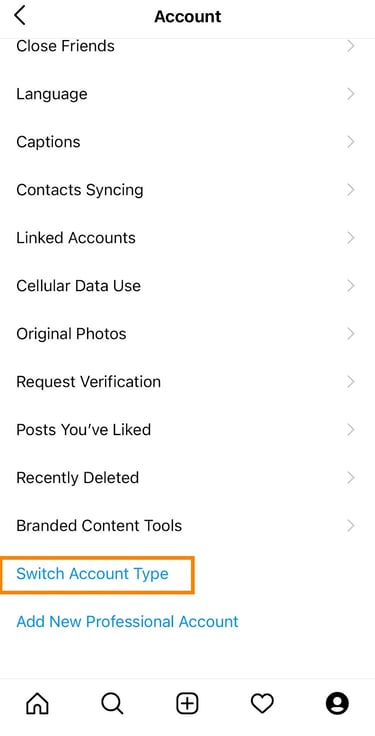
Whether you choose a Creator account or a Business account depends on the type of affiliate business you’re planning to launch. A Creator account is meant for small-time influencers, personal brands, artists, and photographers. A Business account, on the other hand, is intended for well-established influencers, as well as retailers and service providers, to name a few.
2. Connect With Affiliate Partners and Businesses
Now it’s time to choose your affiliate partners. To do this, consider the type of products you intend to market. Will you be very niche like our t-shirt affiliate marketer example above? Or perhaps you want to specialize in kitchenware or artwork.
A great place to start with affiliate marketing is Amazon Associates. This is a program that anyone can join and can be incredibly lucrative, with affiliates being able to earn between 1-10% per sale and the ability to choose the products they promote. Plus, the Amazon network can be connected easily to Strackr, allowing you to collect transactions with a simple click on our unified dashboard and track affiliate links simply.
You can also reach out to other businesses that sell the type of products you’re interested in. A Google search can go a long way in the discovery process. Furthermore, as you establish yourself as a legitimate affiliate marketer on Instagram, relevant businesses might reach out to you to establish a partnership.
3. Choose Relevant Products
I touched upon this in the previous section for when you choose your affiliate partners. But if the partner you’ve chosen sells a lot of different products - like Amazon, for example - you need to hone in on the type of products you’ll promote.
Think about what you do for a living or your hobbies and interests. If you work in the tech industry and you’re knowledgeable on the subject, it’s not going to make a lot of sense for you to promote pet care products. Remember, you’ll be creating content related to your chosen niche regularly. So, not only do you need to understand it, but you need to understand the types of topics and subjects that you can cover easily.
Additionally, you need to promote products that you’ve actually used and trust. Otherwise, you can come off as dishonest amongst your users, which will make your followers much more apprehensive to click on your affiliate links, irreversibly damaging your brand in the process.
4. Optimize Your Profile With Strategic Affiliate Links
Although it’s important not to overdo it, more affiliate links mean more earning potential. Instagram has lots of linking capabilities, including:
Link in Bio

Place affiliate links in your bio. These could be to your affiliate website or a partner’s website. You can place up to five links in your bio, so it’s best to choose links that you’re particularly confident in.
Link Stickers
Anyone can place Link Stickers on their Instagram Stories. This enables users to access your product or service directly from your Story. Previously, only users with 10k followers could access this functionality through the Swipe Up feature. Thankfully for creators and businesses, this restriction no longer applies.
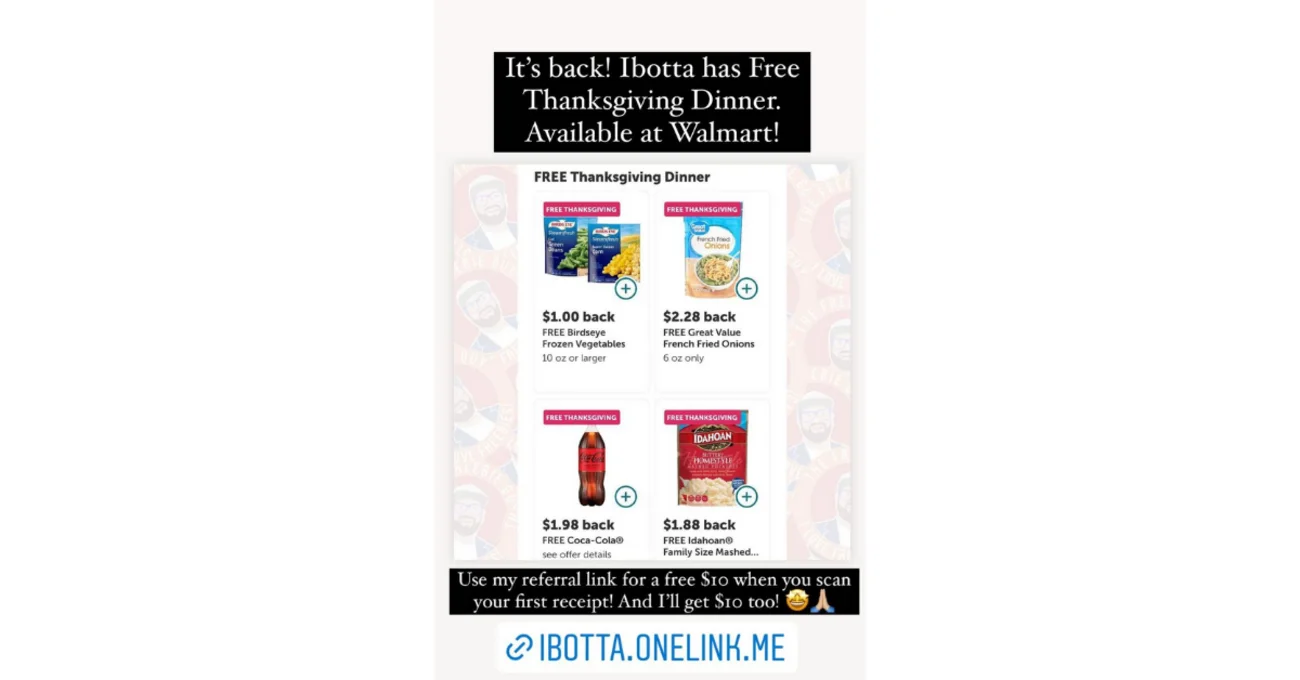
Link Stickers are, as you might guess, clickable stickers with links embedded in them. You can place them throughout your Stories and customize them with different colors. It’s best to put them front and center of your stories, like the Ibotta image above, as it usually garners the best results.
Story Highlights
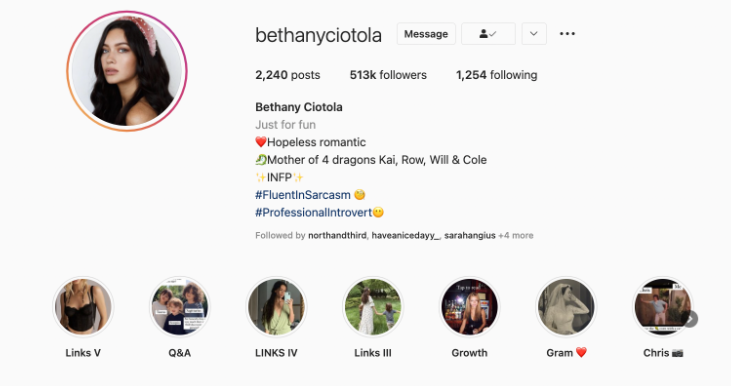
Stories only remain in the Instagram feed for 24 hours. Story Highlights are a way of keeping your content alive beyond this short time restriction. They will appear in your profile, and you can customize the images and names of the individual or groups of Story Highlights. They are also a great tool for keeping your Stories organized. Additionally, you can share these Highlights with your social media and email subscribers to repurpose the content.
You can see how the influencer Bethany Ciotola uses story highlights to include affiliate links efficiently. She even names each highlight ‘LINKS’, which gives a clear indication to users of what these highlights include.
Copy and Paste Links
Finally, Instagram affiliate marketers can ask their audience to simply copy and paste their affiliate links. As you can now use Instagram on a PC, it’s often much easier for them to do this than when it was mobile-only. The copy-and-paste option works well with captions, though you should keep your links short too. Granted, this is the most inefficient way of using affiliate links (at least on Instagram), as users
5. Use a Comprehensive Platform for Managing Your Affiliates
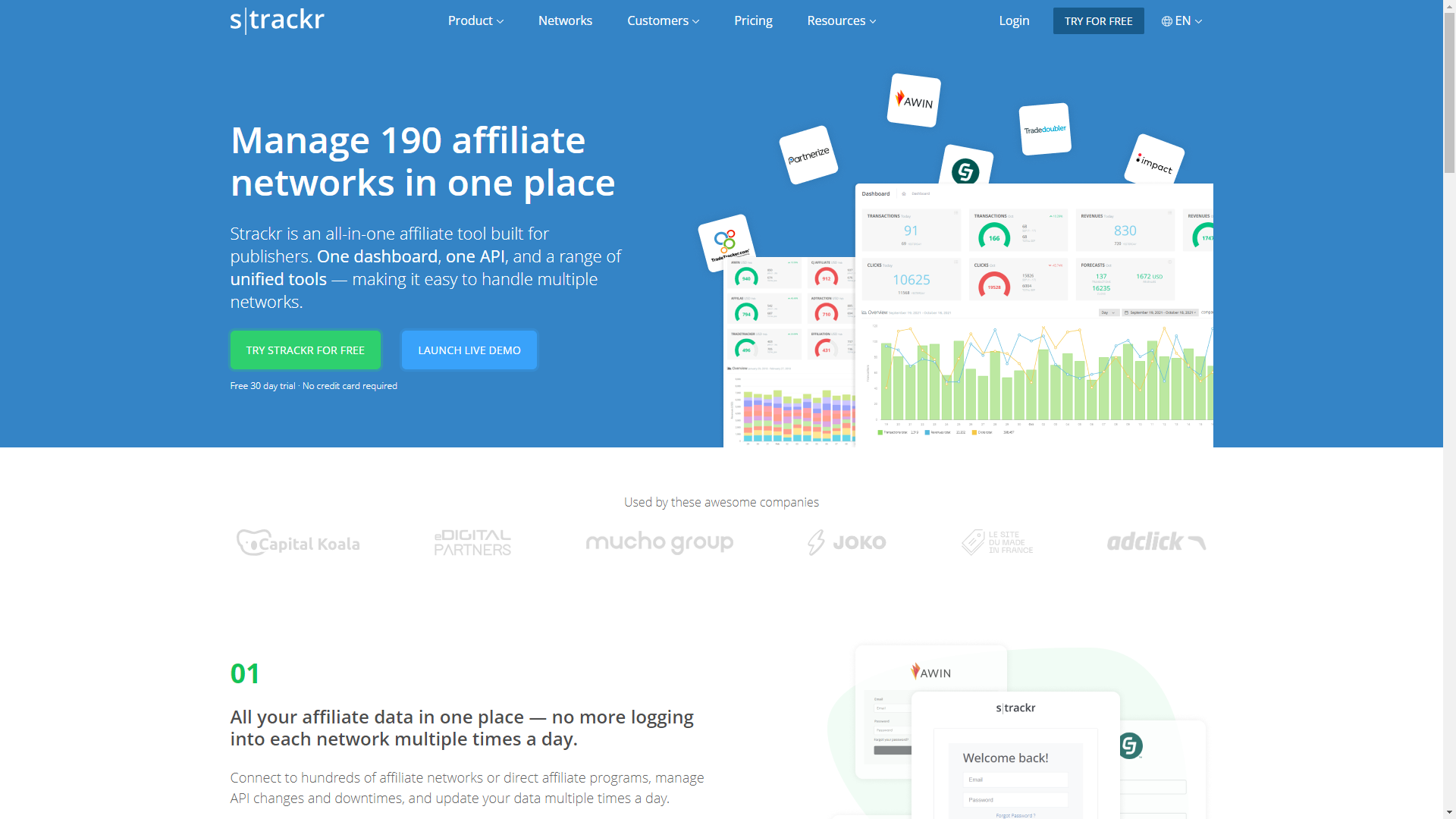
A comprehensive affiliate management tool will go a long way in helping you remain organized and on top of your finances. Strackr is a great choice. With our tool, you can manage up to 190 affiliate networks under one roof.
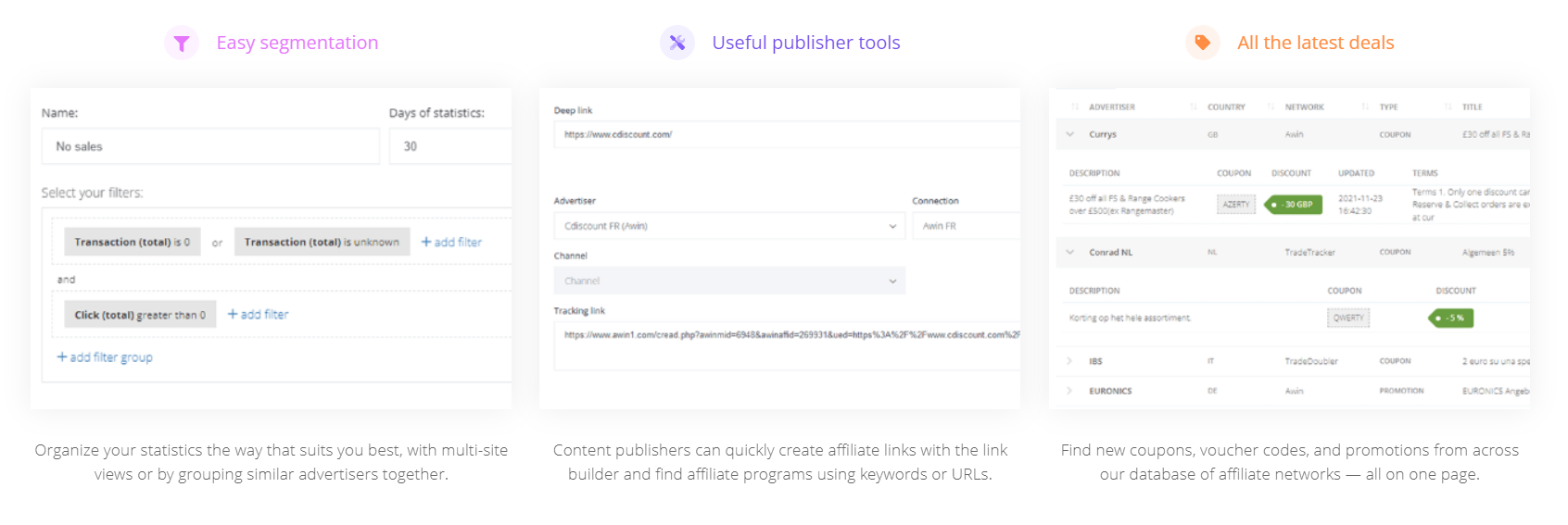
When you’re thinking about what tool to use, consider its analytical capabilities. Here are some of Strackr’s features to get you thinking about what you might need:
-
Collect and analyze your data: Strackr collects all the data from all your channels and translates it into statistics and reports for a detailed view of your business. Key metrics include transactions, earnings per click, conversion rates, and revenues, to name a few.
-
One API: Strackr allows you to create one API to support all your custom integrations. With an API, you can access data from custom-made applications easily.
-
Segmentations: Segment your data based on different characteristics, like no sales and lost clicks.
Best Practices for Affiliate Marketing on Instagram
Create a Killer Bio
Make your Instagram bio stand out. Describe precisely what your brand does and what your audience can expect from viewing your content. There is a 150-character limit on Instagram bios, so you need to be concise. Choose your words carefully and put yourself in the best light with the limited space you have, and most importantly, include your affiliate website and any affiliate links you want to highlight.
Niche-Relevant and Hashtags
Include niche-relevant hashtags in your bio to optimize your exposure. Hashtags are a way of labeling your content and profile so people can find you easier. Instagram will recommend some hashtags to you whenever you type a # or @, allowing you to select the most relevant ones.
Alternatively, you can check out your audience’s profiles to discover popular and relevant hashtags, meaning you can choose hashtags you know your audience will be interested in.
Stick to a Consistent Posting Schedule
As with all business avenues that leverage social media, you need to post consistently. Create a schedule that spreads out your posts so that you don’t flood the feed, as this can become annoying to your users. 2-3 posts per week is an excellent starting point. Also, factor in the time of day you’re going to post, leveraging when your audience is most active. Use social media scheduling tools for easier management, like Flick, HootSuite or SocialPilot.
Be Creative
Brainstorm creative ways to promote your products. A product and caption post might be good enough much of the time, but to make the most of Instagram, think outside the box. Reviews often go down well, for example. Or, get in touch with an influencer for a related topic discussion.
Are you Ready for Instagram Affiliate Marketing?
An Instagram affiliate marketing business can take some time to develop. But if you keep at it, you can reap the tremendous monetary rewards, along with the success that comes with being seen as an authority in your niche. Stick with our best practices guide to maximize your chance of developing a fruitful business.
To help you manage your Instagram affiliate marketing endeavor, use a tool like Strackr. Gathering and analyzing data is the secret to amplifying your campaigns. Not sure if it’s right for you? You can give Strackr a try for free today to find out.
Share
Affiliate dashboard

Connect all your affiliate networks with Strackr to access to unified statistics and tools.
Try for free